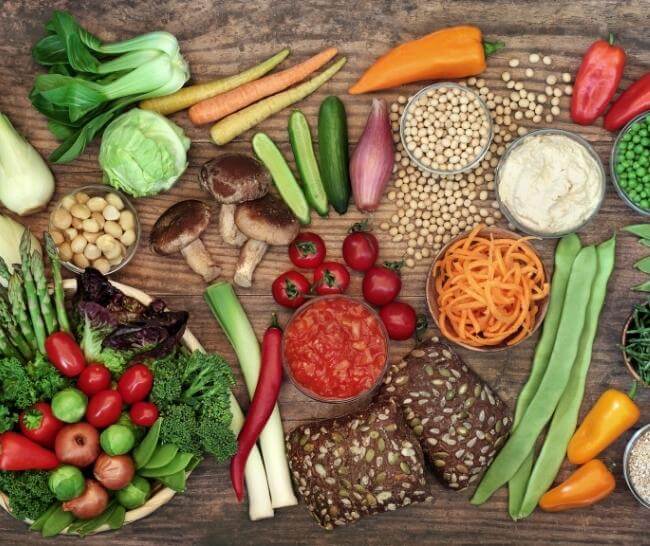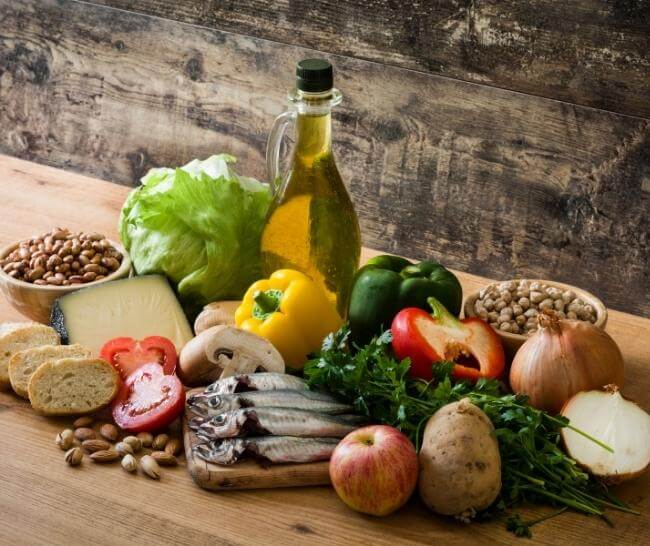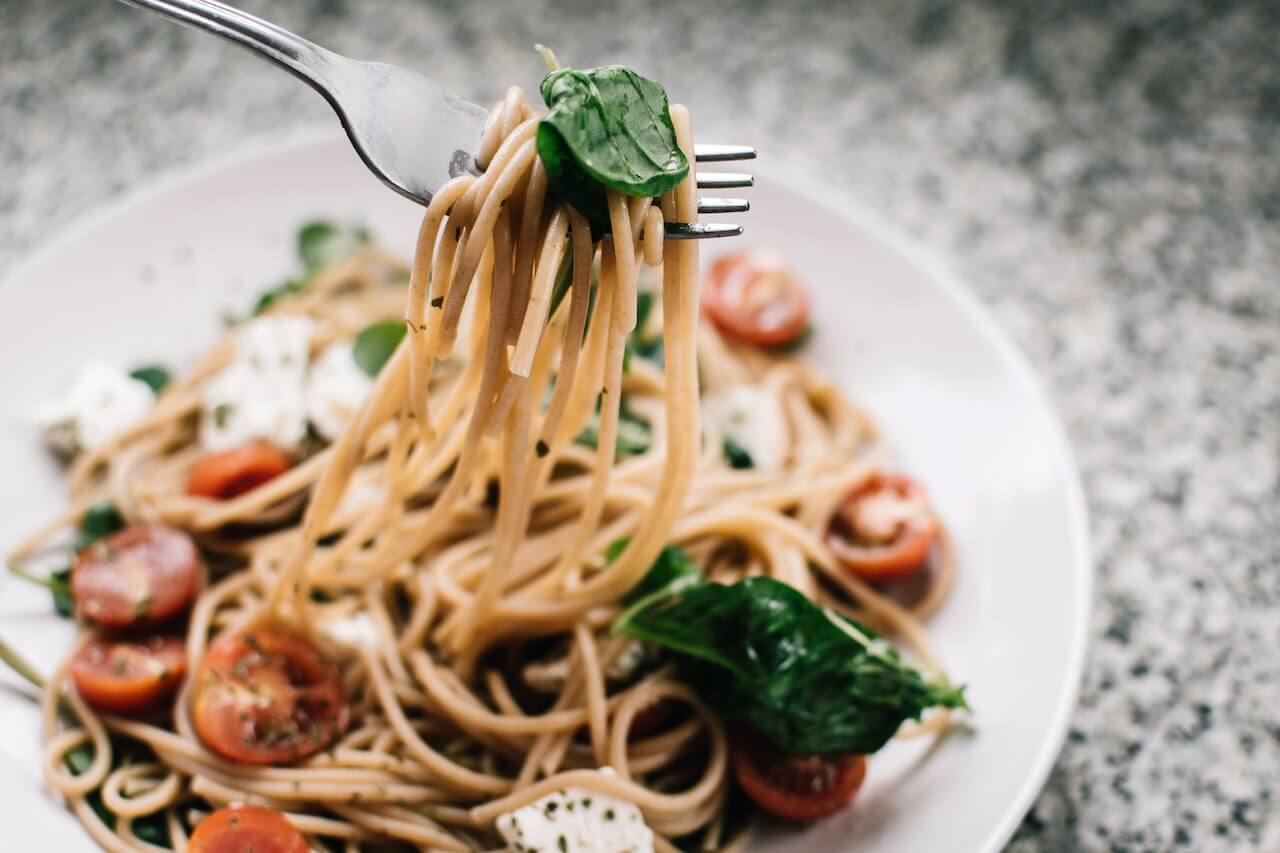Its vibrant color, slightly sweet flavor, and perfectly crumbly texture make it easy to see why many love cornbread. Whether you enjoy a slice with chili on a snowy day, eat cornbread muffins for breakfast, or savor it during the holidays, you may wonder if cornbread is a healthy choice and can fit into a balanced diet.
We’re diving into what cornbread is, the nutrition it provides, and some of the pros and cons of this traditional bread. By the end of the article, you’ll have a good idea of whether cornbread makes sense to regularly include in your diet or if it should be enjoyed as a special occasion food.
{{mid-cta}}
Cornbread: A Definition
Cornbread may seem synonymous with the American South, but its origins are actually rooted in Iroquois traditions.1
It’s a quickbread made from cornmeal, which is dried corn kernels ground into a powder. If you’re from the northern part of America, you may find that cornbread is often served sweetened with sugar, maple syrup, or honey, while traditional southern cornbread is on the savory side.
As a quickbread, it rises with baking powder or baking soda and an acid like apple cider vinegar or buttermilk instead of yeast and often includes eggs, salt, and oil. With some of these ingredients, you can see a lot of variety. Oils that could be used may include vegetable, canola, olive, or coconut oil. Many mixes and recipes also use all-purpose flour or whole wheat flour, so keep this in mind if you’re looking for a gluten-free cornbread since not all mixes or recipes use additional flours.
Exploring the Nutritional Content of Cornbread

There are many recipes and ways to make cornbread, making it difficult to say what the nutritional value is of the particular slice you may be eating. Most will have a nutritional value close to what’s listed below, although it could be higher or lower in carbs, protein, or fat, depending on the ingredients used.
One (60g) piece of cornbread made from a mix includes:2
- Calories: 198
- Protein: 4 grams
- Fat: 6 grams
- Saturated Fat: 3.5 grams
- Carbohydrates: 33 grams
- Fiber: 1.5 grams
- Sugar: 9.5 grams
- Phosphorus: 391 milligrams, 31% daily value (DV)
- Selenium: 8.7 micrograms, 16% DV
- Sodium: 359 milligrams, 15% DV
- Folate: 55 micrograms, 14% DV
- Thiamin: 0.114 milligrams, 10% DV
- Riboflavin: 0.105 milligrams, 8% DV
- Calcium: 81 milligrams, 6% DV
- Iron: 1.11 milligrams, 6% DV
Cornbread is the highest in carbohydrates, providing a small amount of protein and fat per serving. In addition to the nutrients above, it also includes small amounts of potassium, magnesium, and several B vitamins. It’s an excellent source of phosphorus, a mineral necessary for the formation of teeth and bones and the metabolism of carbs and fat in the diet.3
Depending on the recipe used, cornbread can also be high in sodium. One serving of cornbread made from a mix has 15% of the daily value for sodium, a nutrient that most Americans get too much of in their diet.
Is Cornbread High in Fiber?
Cornbread is quite low in fiber, providing only one to two grams per serving. While yellow cornmeal is a whole grain with around 6 grams of fiber per cup, cornbread is often made of a mixture of cornmeal and refined flour, making each serving a low-fiber option.
Is Cornbread Fattening?
Cornbread uses oil as a fat source; one serving provides around 6 grams of fat. While it’s not a low-fat food, it’s not particularly high in this nutrient either. Remember that no one food is bad or fattening by itself, but when eaten in excess or paired with other foods that are also high in fat, calories, and refined carbohydrates, it could contribute to fat or weight gain.
<p class="pro-tip"><strong>Also Read: </strong><a href="corn-blood-sugar-weight-loss">Is Corn Good for Blood Sugar and Weight Loss?</a>.</p>
Pros and Cons of Including Cornbread in Your Diet

While cornbread is a good energy source and offers plenty of health benefits from vitamins, minerals, and a small amount of protein, along with small amounts of essential amino acids, there are a few reasons you may want to limit the amount of cornbread you eat. Here are some cornbread benefits you’ll want to consider and a few downfalls to this popular quickbread.
Pros
- Rich in Phosphorus<p style="margin: 0;"> One serving of cornbread has 31% of the DV of phosphorus. This mineral is needed for several important processes in the body, including bone and teeth formation, the production of proteins, and functions like muscle contractions, nerve signaling, and kidney function<p>
- Rich in Folate<p style="margin: 0;">This water-soluble B vitamin is necessary for the formation of DNA and other genetic materials. Not enough folate could lead to a blood disorder called megaloblastic anemia or neural tube defects like spina bifida if a deficiency is present during pregnancy4<p>
- Selenium Content<p style="margin: 0;">This essential trace element (meaning we need it for survival, but only in small amounts) is important for reproductive and thyroid health and protecting your cells from free radical damage.5 Brazil nuts, meat, and seafood are excellent sources of selenium, but the grains and eggs in cornbread help contribute 16% of the DV<p>
- Versatility<p style="margin: 0;">Versatility is one of the most practical benefits of cornbread. Enjoy it as bread, muffins, on top of chili, or as a side dish with BBQ or stew to soak up any leftover sauce or juices. A slice of cornbread warmed with butter or even crumbled into a bowl, topped with a little milk, can easily be a part of a filling and balanced breakfast. Cornbread can also be substituted for regular bread in dishes like stuffing, roasted vegetables, croutons, or casseroles<p>
Cons
- High Carb Content<p style="margin: 0;"> One slice of cornbread (about one-ninth of an 8x8 pan) has 33 grams of carbohydrates. Even though each recipe or mix will have varying amounts of carbohydrates, as the main ingredient is corn (a starchy vegetable), it’s guaranteed to be high in carbs.
While carbs are necessary and a good source of energy, you’ll want to be cautious of what you pair with your cornbread to avoid eating too many carbohydrates at one meal. If you’re wondering if someone with diabetes can eat cornbread, the answer is yes (but with balance in mind). Pairing a small serving with a high-protein option is one of the best, most balanced ways to enjoy cornbread<p>
- Refined Grain Composition<p style="margin: 0;">While carbohydrates are an excellent source of energy and often come loaded with other essential and valuable nutrients like fiber, cornbread is unfortunately not one of those foods. Commercially-made cornbread is mostly made with refined flour and is low in fiber and protein. The low fiber and presence of refined grains may have you wondering, “Does cornbread cause constipation?” While a diet high in refined carbs can lead to constipation, including cornbread as part of an overall high-fiber diet shouldn’t have that effect<p>
- Gluten Presence<p style="margin: 0;">While some traditional cornbread recipes using only cornmeal are naturally gluten-free, most recipes, including store-bought mixes, include all-purpose flour. So, if you’re steering clear of gluten because of celiac disease or sensitivity, make sure you read the labels closely, as most prepared cornbread and mixes are not gluten-free<p>
- Sodium Levels<p style="margin: 0;">Cornbread may not be the healthiest bread choice if you're watching your sodium intake. The recommended daily limit for sodium is 2,300 milligrams per day, while the American Heart Association (AHA) recommends a limit closer to 1,500 milligrams per day to support a heart-healthy diet and reduce the risk of heart disease.6 One slice of cornbread can have 15% of the daily limit for sodium or more, or 24% of the recommended limit by the AHA<p>
Learn How to Improve Your Nutrition and Monitor Your Glycemic Index Levels with Signos’ Expert Advice.
While the occasional slice of cornbread can be a part of a healthy, balanced diet, it’s important to understand how your body and blood sugar levels respond to it and the other food you eat. Using Signos’ CGM is one tool you can use to learn how your body responds to the food you eat so you can make informed choices and improve your overall health. Not sure if Signos is right for you? Take the quick, free quiz to learn more!
<p class="pro-tip"><strong>Learn More: </strong><a href="is-high-fructose-corn-syrup-bad-for-you">High Fructose Corn Syrup: 5 Negative Health Effects</a>.</p>
- Item 1
- Item 2
- item 3
Topics discussed in this article:
References
- Alfred, G. T. (2014). Kana’tarokhónwe: Cornbread. Cuizine, 5(2). Retrieved from https://www.erudit.org/en/journals/cuizine/2014-v5-n2-cuizine01533/1026770ar/
- U.S. Department of Agriculture, Agricultural Research Service. (2020). Cornbread, prepared from mix. FoodData Central. Retrieved from https://fdc.nal.usda.gov/fdc-app.html#/food-details/1100844/nutrients
- National Library of Medicine. (2023). Phosphorus in diet. MedlinePlus Medical Encyclopedia. Retrieved from https://medlineplus.gov/ency/article/002424.htm
- Office of Dietary Supplements - National Institutes of Health. (n.d.). Folate. Retrieved from https://ods.od.nih.gov/factsheets/Folate-HealthProfessional/
- Office of Dietary Supplements - National Institutes of Health. (n.d.). Selenium. Retrieved from https://ods.od.nih.gov/factsheets/Selenium-HealthProfessional/
- American Heart Association. (2021). How much sodium should I eat per day? Retrieved from https://www.heart.org/en/healthy-living/healthy-eating/eat-smart/sodium/how-much-sodium-should-i-eat-per-day










.jpg)





















